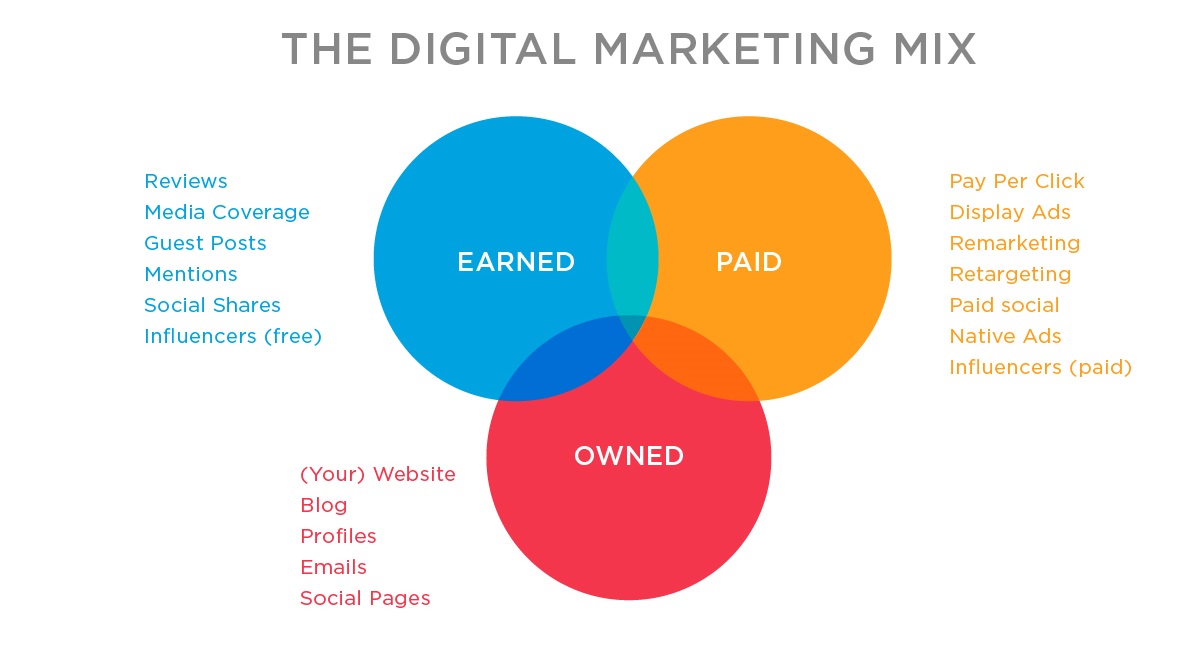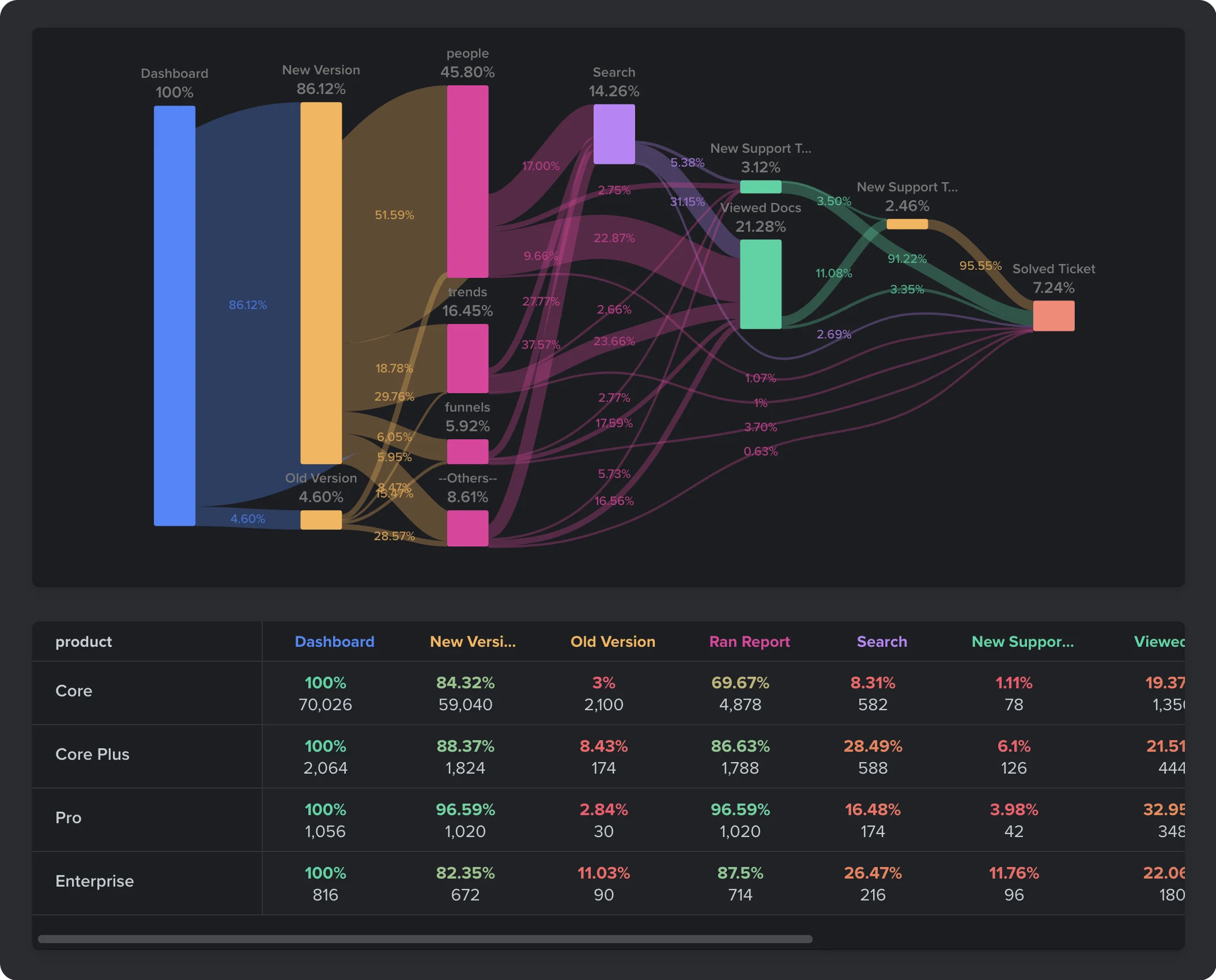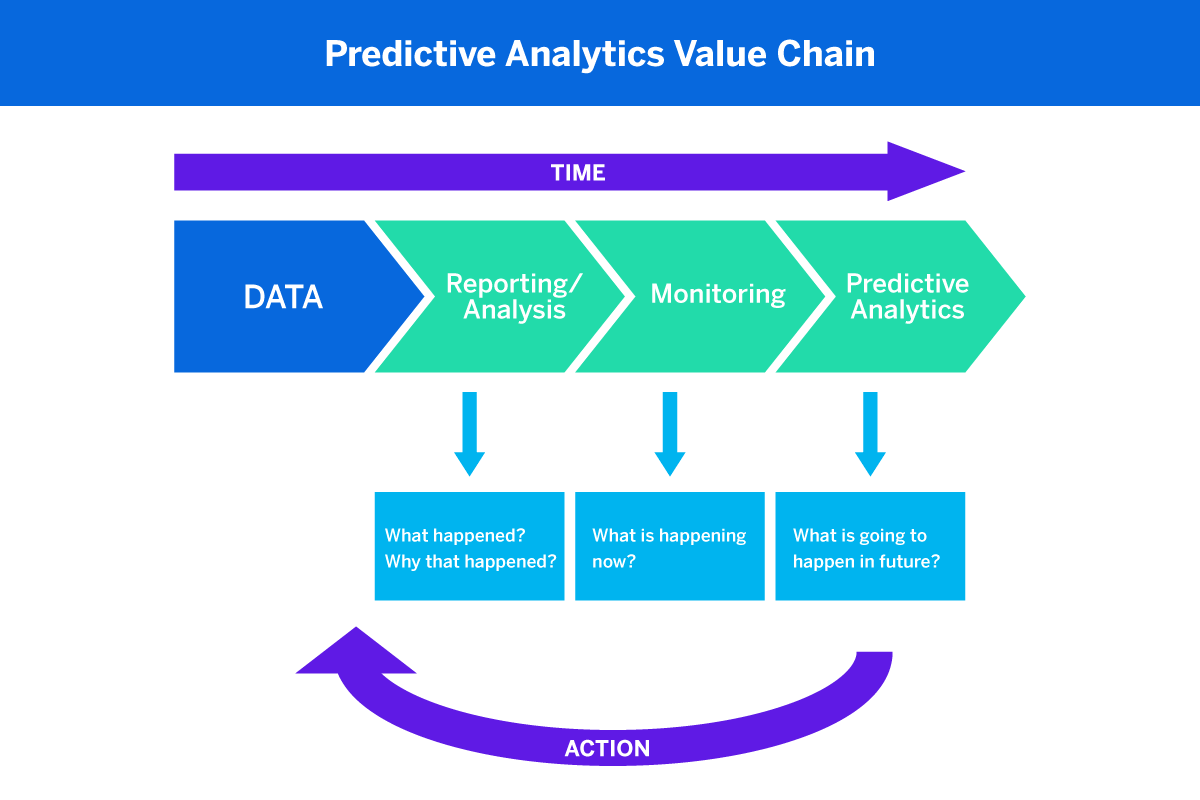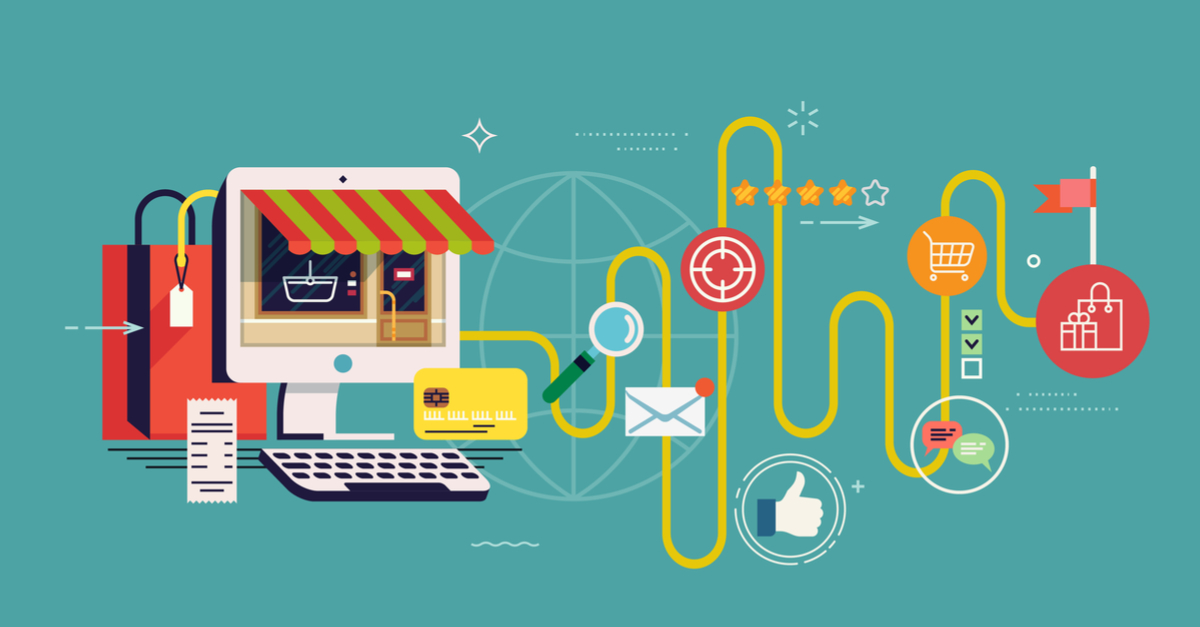15 min to read
How tech giants reduce costs and amplify results with paid media strategy?

Every established business in the world relies on data-driven insights to make decisions regarding the paid marketing campaigns that they run. Understanding how the customer behaves in the real time gives you an edge because you are able to make personalised offers to your customers. When small businesses make decisions regarding their paid campaigns, the only challenge that they face is that they have to rely a lot on third party data. On the other hand, the tech giants have giant databases about their customers to understand more about their preferences and predict their sales.
How does omnichannel marketing fit with paid advertising?
Paid advertising within an omnichannel approach allows for more targeted messaging. Ad content can align with the customer's interactions across different channels, ensuring relevance and personalization. The omnichannel customer journey requires multiple communication channels, with a strong emphasis on creating seamless experiences across all platforms to meet each customer’s preferences. This approach allows customers to choose different ways to interact with your business.
For example, let’s say Emma comes across a Microsoft advertisement for the latest Surface laptop on social media. Intrigued by the sleek design and advanced features, Emma decides to explore more on Microsoft's website. Impressed with the product details, she further decides to subscribe to Microsoft's newsletter for updates and exclusive offers related to Surface devices. This strategic move results in Emma receiving personalized newsletters, including information on the Surface laptop and exclusive discounts.
In this example, each stage of Emma's journey aligns with a specific strategy. The seamless flow between encountering the social media ad, exploring the website, and engaging with the newsletter is carefully orchestrated. The effectiveness of this omnichannel approach plays a pivotal role in influencing Emma's decision-making process, whether she ultimately decides to purchase the Surface laptop or not.
The omnichannel strategy ensures that each touchpoint contributes cohesively to Emma's overall experience, enhancing the likelihood of a meaningful purchase related to Microsoft's Surface products. It's a well-choreographed dance of strategies, guiding customers through an informed and engaging journey, ultimately strengthening their connection with Microsoft's products.
Set up customer journey analytics to see what actually drives your audience towards purchasing

Purpose: Understand how customers interact with your business.
Start with: Develop a visual customer journey map to outline different stages in the customer-brand relationship.
Goes Beyond Mapping: Analyse how each interaction influences consumer decisions.
Additional Data: Integrate extra data to evaluate how interactions guide customers toward their goals.
Benefits: Keep customers focused, address obstacles, enhance overall experience, and build deeper connections.
Customer Journey Analytics involves recognizing the importance of every interaction between customers and your brand. The process typically starts with a customer journey map, a visual representation such as a graph or flowchart illustrating the different stages in the relationship between the customer and the brand.
However, customer journey analytics goes beyond just mapping; it involves analysing how each interaction influences your customers' decision-making. Additional data is integrated to evaluate how these interactions guide customers toward their ultimate goals. The use of customer journey analytics enables you to keep your customers focused and overcome any obstacles to completing their desired actions.
It gives you the power to make the overall customer experience better and design customer journeys that not only get customers where they want to go but also build stronger connections along the way. This mapping further helps you with channel analysis to make your marketing campaigns work even better. Instead of looking at all your marketing stuff as one big picture, break it down. Look at each marketing method by itself and see how it plays with the others.
Breaking things down helps you see what each method is good at and where it might need a little boost. Understanding how these different paths come together and affect each other opens up chances for teamwork. For example, you might find out that your social media ads send people to your website, and those visitors are more likely to buy through email marketing. Knowing these connections lets you plan your marketing in a smart and strategic way.
Tech Giants utilise predictive analytics to ensure they have a smooth communication with the audience

See if we talk about things in the context of paid advertising, then we can define predictive analytics as the methodology that aims to predict how specific ads or campaigns will perform, allowing us to make informed decisions and optimise their strategies. Data gives you direct access to infinite ways to improve your marketing efforts, you just need to understand what's happening and then create strategies to either improve what isn't working or keep investing in what's doing well.
Audience Segmentation:
- Leverage predictive analytics to segment the audience based on behaviour and preferences.
- Identify distinct customer segments for personalised communication.
Understanding Preferences:
- Analyse past data to understand audience preferences and interaction patterns.
- Utilise predictive analytics to anticipate future preferences and tailor communication accordingly.
Channel Optimization:
- Analyse historical data to identify preferred communication channels.
- Utilise predictive analytics to optimise communication channels for each audience segment.
We could utilise AI to group customers into various segments in real time
Use artificial intelligence (AI) to group your customers and predict their behaviours. This means sorting your customers into different categories based on their preferences and needs. Doing this manually is old-fashioned, so we use AI and historical data to do it more efficiently. With AI, we can understand how different groups of customers might respond to various products or offers. This helps us know which customers are likely to make a purchase based on certain criteria. By predicting these patterns, we can create a better experience for our customers and make our marketing more effective.
The real time predictive demand pricing process is like deciding how much to charge for products or services based on how much people are willing to pay. When you use predictive analytics, you can create plans to understand what factors affect how much people are willing to pay. This helps in making pricing strategies that benefit your company's financial growth.
For instance, let's consider Uber. They charge higher prices when there's a lot of demand, like during rush hours. Uber may also offer different types of rides, such as more affordable options like shared rides or higher-priced options for more comfort, catering to different passenger preferences and budget constraints. The overall idea is to dynamically adjust prices based on demand and supply to optimise revenue while providing various options for passengers.
Remarketing is a crucial aspect to get interested customers back to your storefront
Remarketing works like targeting the customers who have already clicked on your ad or visited your website. It works like when someone visits your website, we collect information about their visit using tools like Google Tag Manager. This information is stored in their browser's cookies. Then, we use analytics to look at all the data from your website. With this data, we can group your audience based on how they've used the website before and show them ads that match their interests.
Instead of showing everyone the same ad, we can show different ads to different people based on where they are in their customer journey. For example, people who visited the website recently might see a branded ad, while those who left items in their shopping cart might see an ad focused on those products. Most digital advertising platforms, like Google and Facebook Ads, can do remarketing. This means we can create campaigns that are personalised to users, no matter where they go online.
Now, why is this important for your business? Well, people often need to visit a website a few times before they decide to buy something. Remarketing helps us create more chances for users to see your brand during their online journey. This makes it more likely that they'll choose your brand when they're ready to make a purchase. And that, in the world of digital marketing, is what it's all about.
Deep learning with heat map analysis
Heat maps have been very useful for deep learning tools to analyse and understand how well the specific areas of the website performs. It is used to optimise the landing pages and other related marketing strategies. The specific heat levels help in understanding the areas where users generally click and track the mouse movements. These data could help the marketers relocate some key call-to-action sections to the area where the user interacts more.
Such essential details help in increasing Click-Through Rates(CTRs). Other eye-tracking studies also contribute to creating deep learning heat maps to position important content elements at positions that could improve user visibility and user interaction. Detailed data on where the people are spending most of their time on the web page and where they are most comfortable engaging helps improve the design, functionality, and structure of websites and the search engine optimization strategies.
Click and Movement Tracking:
- Heat maps visualise the intensity of user interactions by highlighting areas where clicks occur and tracking mouse movements.
- Analyse these heat levels to identify hotspots where user engagement is high.
Call-to-Action Placement:
- Utilise heat map data to strategically position key call-to-action (CTA) sections within high-interaction areas.
- Relocating CTAs to these hotspots can significantly improve Click-Through Rates (CTRs) as users are more likely to engage with them.
Eye-Tracking Studies:
- Combine heat map analysis with eye-tracking studies for a comprehensive understanding of user behaviour.
- Develop deep learning heat maps that guide the placement of crucial content elements based on user visibility and interaction patterns.
Content Element Positioning:
- Leverage insights from eye-tracking studies to position important content elements where users naturally focus their attention.
- Strategic placement enhances user visibility, interaction, and overall engagement with the webpage.
Target CPA also needs your attention
Target CPA is a clever strategy from Google for bidding that aims to get advertisers the most conversions. It works smartly by adjusting bids automatically and participating in auctions at optimal times to achieve the best results, all while staying at or below the set target CPA. This strategy is particularly beneficial for advertisers and marketers because it eliminates the need for constant manual bid adjustments. Thanks to machine learning, the algorithm understands when to place the right bid, ensuring maximum value for marketers without the need for constant monitoring and bid changes.
The algorithm looks at your campaign's past data and considers the context when your ad is up for display. It then figures out the best bid each time your ad could show to the audience. This means that the conversion rate of your Google ads might change if there are adjustments to your website, changes in your ads, or more competition in ad auctions. While Google ads aim to keep the cost per conversion close to your set target CPA, the real conversion rate could be above or below the expected rate.
What metrics do you need to measure with Target CPA?
To figure out how much it costs to get each new customer through your campaign, divide the total amount spent on advertising by the number of new customers you got. If you want to make the most of your budget, consider paying for actual customer actions instead of just clicks on your ads.
To see the average target cost for acquiring a customer, go to the performance table on your "Campaigns" page.
To compare how well you're doing compared to your target goals, look at metrics like average target cost per acquisition, average target cost per install, and average target cost per in-app action. You can find these in the performance category by adding a new column or including them in the performance chart. When it comes to optimising your target cost for acquiring customers, platforms like Google aim to give users the best experience. They don't just let the highest bidder win; instead, they use a metric called AdRank to decide who wins in the auction.
How the successful brands allocate their budgets and how you could replicate it for your brand?
To decide on the right budget, you must consider your goals for using Paid Media channels.
Step 1: Determine your Target CPA
In marketing, the "Target Cost per Acquisition" (CPA) is crucial. This is the amount you're willing to pay for a single sale, calculated as the total media spend divided by the number of new customers acquired. It helps track campaign efficiency and business profitability. Your business strategy may involve initial losses for long-term gains, especially during early brand phases.
Step 2: Find your average CPC
Most Digital Advertising platforms operate on a "Pay per Click" basis. The Average Cost-per-Click (CPC) is the average amount you pay for someone to click on your ad. It varies by campaign type, platform, and industry. Historical data, benchmark data, and keyword research tools can help you determine your average CPC.
Step 3: Find your average Conversion Rate
Conversion rate measures website visits or clicks compared to actual conversions (purchases or lead submits). Historical data and benchmark data are useful for determining your average conversion rate.
Step 4: Putting it all together
The equation looks like this:
Total Investment / Average CPC = Clicks
Clicks * Conversion Rate = Sales
Sales / Total Investment = Average CPA
Step 5: Comparing Your Projected Results to Your Goals
Evaluate your Average CPA; does it align with your target? If it's too high, focus on optimising your digital media strategy. If within range, assess the total volume of conversions. Adjust your investment accordingly to meet or scale back from your targets. This iterative approach ensures your budget aligns with your goals and maximizes returns.
FAQs - Frequently Asked Questions
What is omnichannel marketing and how does it enhance paid advertising efforts?
Omnichannel marketing refers to the creation of a seamless customer experience across all channels and platforms, including online and offline touchpoints. This strategy acknowledges the complexity of modern consumer behaviors, where a customer may engage with a brand in multiple ways, such as through social media, email, mobile apps, and physical stores, before making a purchase decision. By implementing an omnichannel approach, businesses can ensure consistency in messaging, branding, and customer experience, regardless of the channel. This coherence enhances paid advertising efforts by delivering more personalized and relevant ads to the audience, based on their interactions across different channels. For instance, a customer who browses products on a website might later see a related ad on social media, reinforcing their interest and potentially leading to a conversion. This strategy not only increases the efficiency of ad spend by targeting more engaged consumers but also boosts overall customer satisfaction and loyalty. Codedesign has observed that clients who adopt an omnichannel marketing strategy often see improved return on investment (ROI) from their paid advertising campaigns, thanks to increased relevance and personalization.
How can small businesses leverage data like tech giants to improve their paid media strategies?
Small businesses can harness the power of data analytics and technologies to refine their paid media strategies, much like tech giants. By collecting and analyzing data from their websites, social media platforms, and customer interactions, small businesses can gain valuable insights into consumer behavior, preferences, and trends. Utilizing tools such as Google Analytics and social media analytics platforms, they can track the performance of their ads in real-time, identify high-performing segments, and adjust their strategies accordingly. Advanced techniques such as A/B testing can also be employed to compare different ad variations and optimize for the best outcomes. Furthermore, small businesses can explore programmatic advertising platforms, which use algorithms to buy and place ads in an automated manner, allowing for more efficient targeting and budget utilization. By leveraging these tools and techniques, small businesses can achieve a level of sophistication in their paid media strategies that rivals larger corporations, enabling them to compete more effectively in the digital marketplace. Codedesign's work with small to medium-sized businesses has shown that even with limited budgets, strategic data use can significantly enhance the effectiveness of paid media campaigns.
What role does customer journey analytics play in optimizing marketing strategies?
Customer journey analytics is crucial for optimizing marketing strategies as it provides a comprehensive view of the consumer's path from awareness to purchase. By analyzing the various touchpoints and interactions a customer has with a brand, marketers can identify patterns, preferences, and bottlenecks in the journey. This insight allows for the creation of more targeted and personalized marketing efforts, improving engagement and conversion rates. For instance, if analytics reveal that a significant number of potential customers drop off at a particular stage of the funnel, strategies can be adjusted to address the issue, such as by improving the user experience on a website, offering more relevant information, or retargeting ads to re-engage those users. Customer journey analytics also helps in allocating resources more effectively by highlighting the channels and tactics that deliver the best ROI. Codedesign has successfully used customer journey analytics to fine-tune its clients' marketing strategies, resulting in higher efficiency and more impactful outcomes.
How can predictive analytics improve audience segmentation and targeting in paid campaigns?
Predictive analytics can dramatically enhance audience segmentation and targeting in paid campaigns by leveraging historical data and machine learning algorithms to forecast future behaviors, interests, and preferences of potential customers. This approach allows marketers to identify and target segments of the audience that are most likely to convert, increasing the efficiency and effectiveness of ad spend. For example, predictive analytics can help identify which users are most likely to purchase a particular product based on their past interactions, demographic information, and behavior patterns. Marketers can then create highly tailored ads and offers for these segments, improving the chances of conversion. Predictive analytics also enables dynamic segmentation, where audience groups are continuously updated based on new data, ensuring that marketing efforts remain relevant and timely. Codedesign has leveraged predictive analytics for its clients to refine targeting strategies in paid campaigns, leading to significant improvements in conversion rates and overall campaign performance.
What benefits do AI-driven customer segmentation offer to marketers?
AI-driven customer segmentation offers numerous benefits to marketers by employing advanced algorithms to analyze vast amounts of data and identify distinct groups within a customer base based on shared characteristics, behaviors, and preferences. This enables more personalized and effective marketing strategies. Key benefits include enhanced targeting precision, as AI can uncover subtle patterns and segments that may not be apparent through traditional analysis methods, leading to more relevant and engaging marketing messages. AI-driven segmentation also allows for real-time segmentation updates, ensuring that marketing efforts are always aligned with the latest consumer trends and behaviors. Additionally, it improves efficiency by automating the segmentation process, freeing marketers to focus on strategy and creative execution. The use of AI-driven customer segmentation has helped Codedesign's clients to significantly improve engagement rates, increase customer loyalty, and drive higher ROI from their marketing campaigns.
How does remarketing work and why is it important for converting prospects into customers?
Remarketing is a powerful digital marketing strategy that targets individuals who have previously interacted with a brand but did not complete a purchase or desired action. By placing cookies on the user's device during their initial visit, marketers can then display targeted ads to these users as they browse other parts of the internet, effectively reminding them of the products or services they viewed. This strategy is important for converting prospects into customers because it re-engages individuals who have already shown interest in the brand, increasing the likelihood of conversion. Remarketing allows for highly personalized advertising, as the ads can be tailored based on the specific products or pages viewed by the user, making the message more relevant and compelling. Moreover, remarketing campaigns often have a higher return on investment compared to other advertising efforts, as they target a more qualified audience. Codedesign has utilized remarketing techniques for its clients to successfully boost conversion rates and capture potential sales that might otherwise be lost.
Can deep learning and heat map analysis significantly improve website and ad performance?
Yes, deep learning and heat map analysis can significantly enhance website and ad performance by providing deeper insights into user behavior and preferences. Deep learning, a subset of machine learning, can analyze complex data patterns to predict user actions, optimize content delivery, and personalize user experiences. For instance, by analyzing user interactions and engagement metrics, deep learning algorithms can identify the most effective content types, layouts, and call-to-action placements to maximize conversions. Heat map analysis complements this by visually representing where users click, scroll, and spend time on a website or an ad. This insight helps marketers understand what captures user attention, guiding improvements in website design and ad creatives for better engagement and performance. Implementing these technologies has allowed Codedesign clients to make data-driven decisions, leading to more intuitive user experiences, higher engagement rates, and increased conversions.
What is Target CPA, and how does it help in managing advertising budgets effectively?
Target Cost Per Acquisition (CPA) is a bidding strategy used in digital advertising that focuses on optimizing campaigns to achieve a specific acquisition cost for a desired action, such as a sale or a lead. This approach allows advertisers to set a target CPA that aligns with their budget and profitability goals, ensuring that the advertising spend is used efficiently to acquire customers at a cost that makes sense for the business. The algorithm automatically adjusts bids for each ad placement based on the likelihood of conversion, aiming to get as many conversions as possible at or below the target CPA. This strategy is particularly beneficial for managing advertising budgets effectively as it focuses on the return on investment (ROI) from the ad spend, rather than just maximizing traffic or impressions. By prioritizing cost efficiency and conversion optimization, Target CPA helps businesses stay within budget while achieving their marketing objectives. Codedesign has employed Target CPA strategies for various clients, leading to optimized ad spends and improved campaign performance.
How can businesses effectively allocate their budgets for paid media to replicate the success of leading brands?
To effectively allocate budgets for paid media and replicate the success of leading brands, businesses need to adopt a data-driven approach that emphasizes flexibility, measurement, and continuous optimization. Start by setting clear objectives for your paid media efforts, such as increasing brand awareness, generating leads, or driving sales. Allocate your budget across different channels based on where your target audience spends the most time and where previous campaigns have shown the best performance. Utilize advanced analytics tools to measure the effectiveness of each channel and campaign in real-time, allowing for quick adjustments in strategy or budget allocation to maximize ROI. It's also crucial to experiment with different ad formats, targeting options, and creative strategies to find what works best for your brand. Leading brands often leverage programmatic advertising for efficient budget allocation, targeting users across multiple platforms with precision and at scale. By adopting these practices and continually testing and refining your approach, businesses can effectively allocate their paid media budgets to achieve significant results, as demonstrated by Codedesign's success with its clients in various industries.
What steps should a company take to start implementing these advanced paid media strategies?
To start implementing advanced paid media strategies, a company should first ensure a solid understanding of its business goals, target audience, and competitive landscape. Begin by collecting and analyzing data to gain insights into customer behavior, preferences, and engagement patterns. Establish clear objectives for what you aim to achieve with your paid media campaigns, such as increasing brand awareness, driving website traffic, or boosting sales. Next, invest in the necessary tools and technologies for data analytics, customer segmentation, and campaign management, such as Google Analytics, Customer Relationship Management (CRM) software, and programmatic advertising platforms. Educate your team on the latest digital marketing trends, techniques, and best practices, or consider partnering with a digital marketing agency like Codedesign that has expertise in advanced paid media strategies. Implement a test-and-learn approach, starting with small-scale experiments to assess the effectiveness of different tactics and gradually scaling up successful strategies. Continuously monitor campaign performance, utilizing metrics and KPIs to measure success and make data-driven decisions for optimization. By following these steps and remaining committed to innovation and improvement, companies can effectively implement advanced paid media strategies to enhance their digital marketing efforts.

About Bruno GavinoBruno Gavino is the CEO and partner of Codedesign, a digital marketing agency with a strong international presence. Based in Lisbon, Portugal, with offices in Boston, Singapore, and Manchester (UK) Codedesign has been recognized as one of the top interactive agencies and eCommerce agencies. Awarded Top B2B Company in Europe and Top B2C company in retail, Codedesign aims to foster personal relationships with clients and create a positive work environment for its team. He emphasizes the need for digital agencies to focus on data optimization and performance to meet the increasingly results-driven demands of clients. His experience in digital marketing, combined with a unique background that includes engineering and data, contributes to his effective and multifaceted leadership style. |

About CodedesignCodedesign is a digital marketing agency with a strong multicultural and international presence, offering expert services in digital marketing. Our digital agency in Lisbon, Boston, and Manchester enables us to provide market-ready strategies that suit a wide range of clients across the globe (both B2B and B2C). We specialize in creating impactful online experiences, focusing on making your digital presence strong and efficient. Our approach is straightforward and effective, ensuring that every client receives a personalized service that truly meets their needs. Our digital agency is committed to using the latest data and technology to help your business stand out. Whether you're looking to increase your online visibility, connect better with your audience, get more leads, or grow your online sales. For more information, read our Digital Strategy Blog or to start your journey with us, please feel free to contact us. |
CodeDesign is leading:
- Digital Agency
- Digital Marketing Agency
- Digital Ecommerce Agency
- Amazon Marketing Agency





Add comment ×